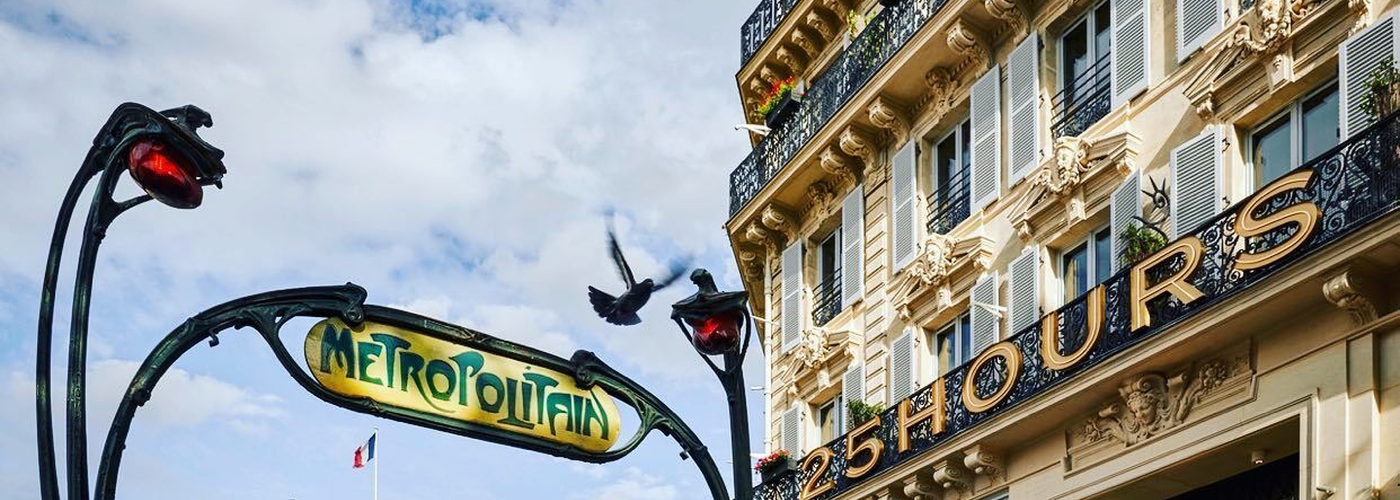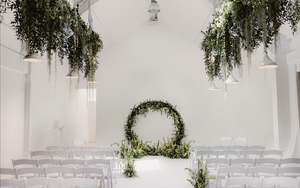Neil Sowerby takes the Eurostar to the French capital and goes off the rails
THE eyes of the world will be on Paris this summer. Expect the opening ceremony of the 2024 Olympic Games to be spectacular. Not held in a stadium but uniquely along a 6km stretch of the Seine with up to 600,000 spectators able to access it. (They are even cleaning up the river to host swimming events later.)
A man’s arm is fished out of the Canal Saint-Martin, then the remaining body parts are discovered but not the head. Maigret is called in
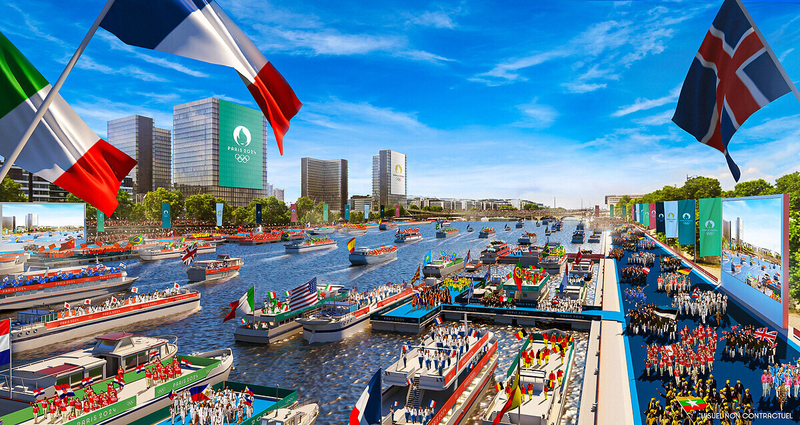
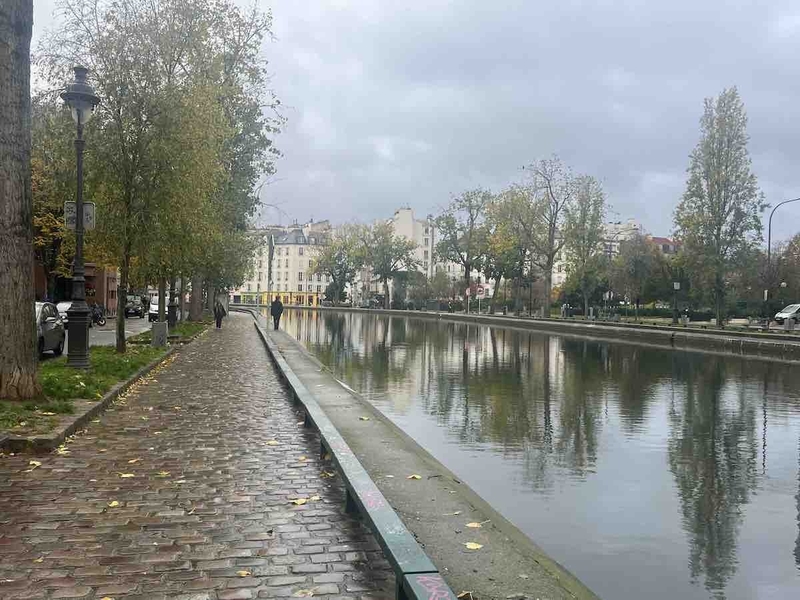
Yet if un-sporty me were in the French capital on July 26, I’d be tempted to give it a miss. Maybe, as an indefatigable ‘flaneur’, take in a more sedate waterway, the Canal Saint-Martin, with its Inspector Maigret ghosts, then meander across to the ethnically diverse purlieus of the Gare du Nord – a far remove from both Right or Left Banks, but with its own atmospheric stories to tell. It’s an unfairly neglected area, worthy of exploration.
Built a century and a half ago, the monumental station has always been an entry point for the poor, the desperate, the aspirational, from Africa, the Levant, far-off India and China and perennially France’s industrial North and Eastern Europe. Many incomers opened businesses in its shadow… and stayed on.

The Gare du Nord hosts the opening scene of the first Maigret novel in 1931 – Pietr le Letton (Pietr the Latvian). A body is discovered aboard the Étoile du Nord, the luxury Paris-Bruxelles-Amsterdam Express… is it connected with the the lady in mink and silk stockings on Platform 11? The great detective’s creator, Georges Simenon had himself arrived there from his native Belgium a decade earlier. He wasn’t impressed: “The coldest, draughtiest and busiest of Paris’s stations, with trains arriving from Belgium and Germany, bringing in their loads of crooks.”
Hardly a fit with my 2023 Eurostar companions from St Pancras, while the revamped terminus with its 31 platforms amazingly manages to cope with a daily total of 700,000 passengers – the largest of any terminus in Europe. Ahead of the Rugby World Cup and the Olympics refurbishment plans were afoot to nearly triple it in size. They were scrapped because of spiralling costs and the timescale. There were also fears that its transformation into a major shopping and entertainment hub might be out of character with the multicultural neighbourhood.
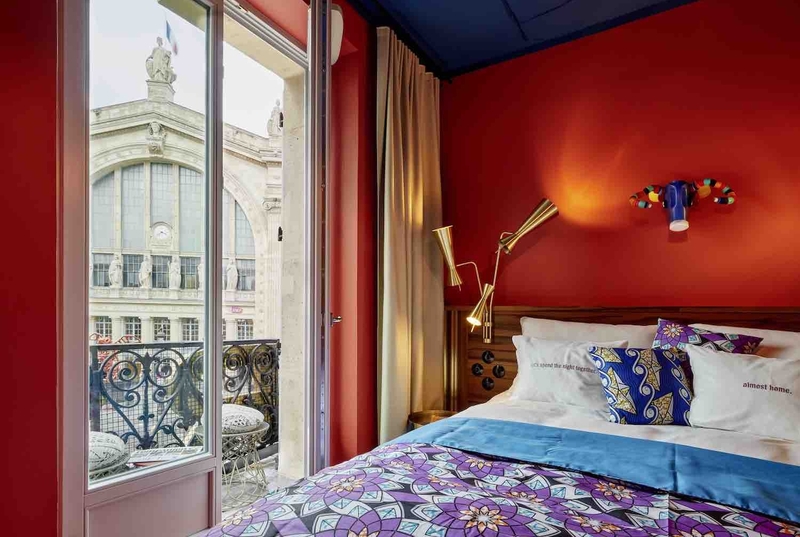
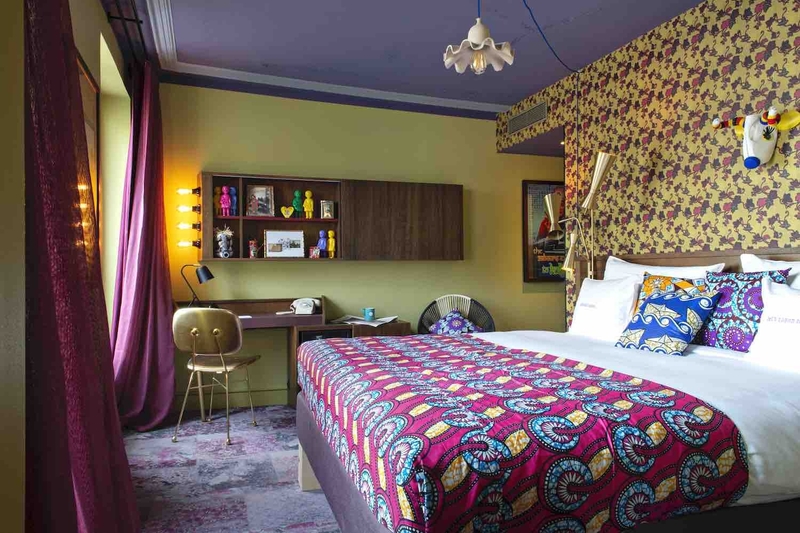
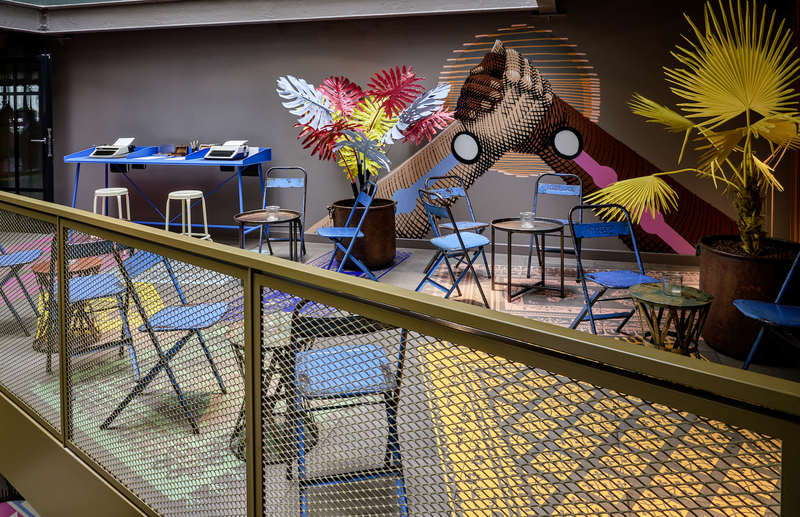
A stylish homage to that melting pot is my lodging right across the road from the main station entrance. So convenient. The Hotel du Chemin de fer du Nord was opened in 1870 shortly after the unveiling of the station. Since 1925 the Brasserie Terminus du Nord (fruits de mer platters a speciality) has occupied the ground floor of this listed Belle Epoque building. Five years ago the remainder of the space was given a 21st century makeover by the German 25hours hotel group.
The 25hours Hotel Terminus Nord offers, across six floors, 237 rooms, some like mine featuring a balcony overlooking the teeming station forecourt. No less exciting is the bedroom interior celebrating the vivid colours of Africa and India. All part of a bespoke theme that also encompasses the public rooms, whose artwork pays tribute to 'neighbourhood heroes'. Let’s call the whole package ‘bazaar chic’. The hotel bar ‘La Sape’ – centred on a glowing counter of bronze-coloured mosaic brass – honours a fashion subculture in the cities of the Congo. Well, recherché is a French word.
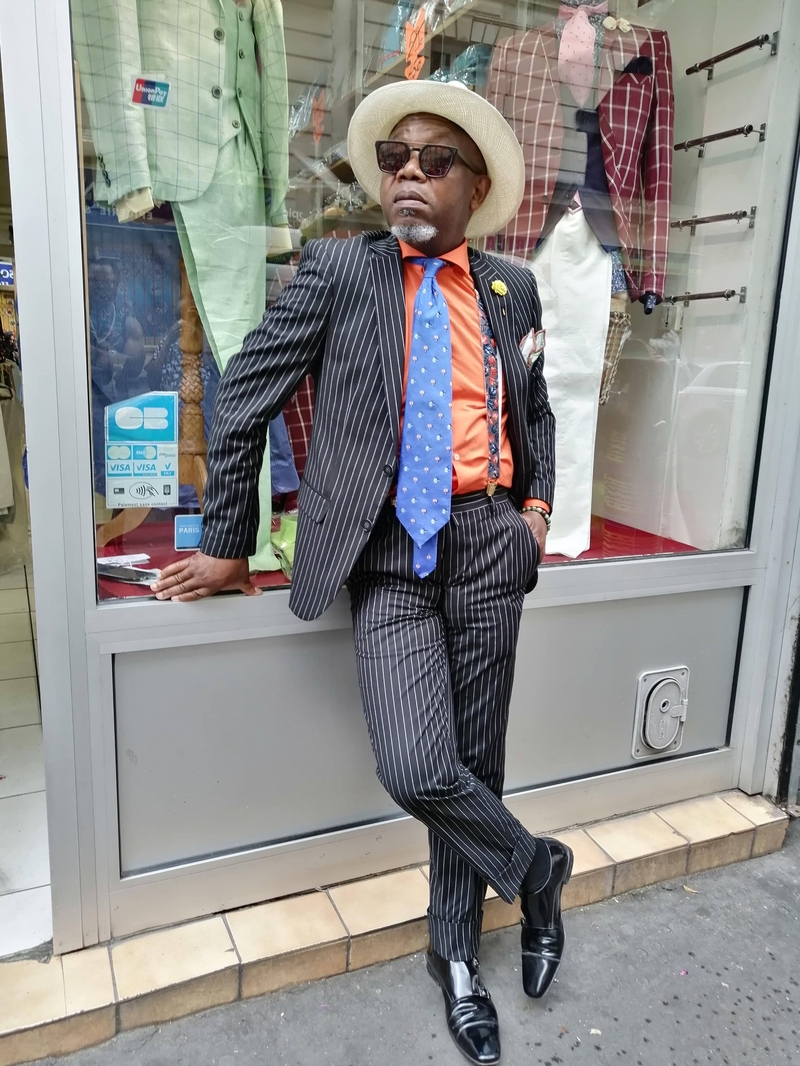
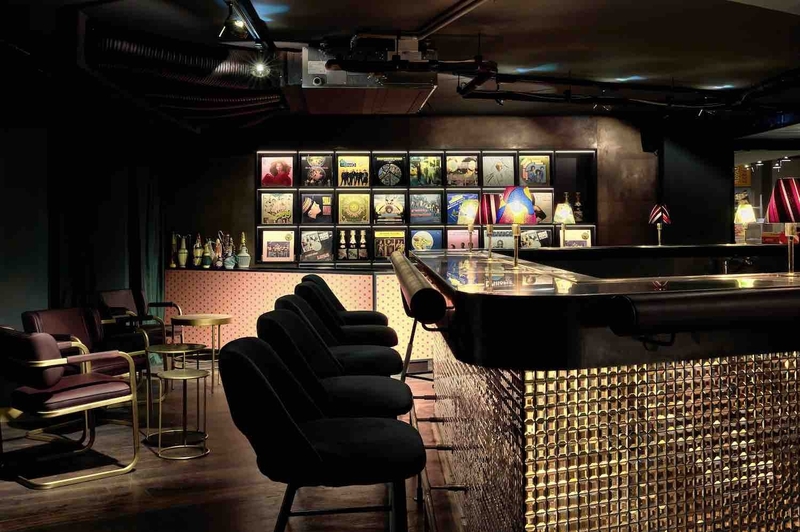
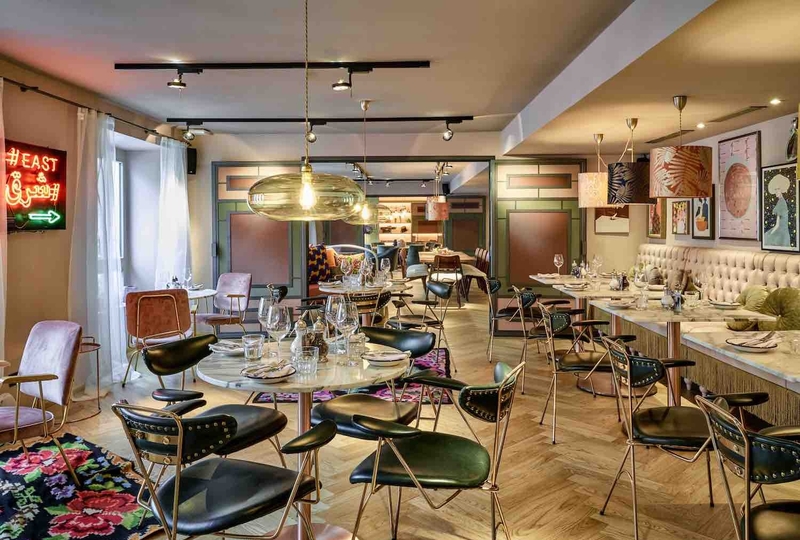
The name is an abbreviation of Société des Ambianceurs et des Personnes Élégantes (literally ‘Society of Ambiance-Makers and Elegant Dressers’). These were young black men, ‘sapeurs’, who aped the dandyish styles of colonial predecessors. Their colourful dress sense has become a cult must-have in Paris and beyond, promoted by designer and friend of the hotel Jocelyn Armel. He launched his Sape & Co brand from his mother’s Congolese restaurant in the immigrant quartier of Château Rouge.
The hotel’s food offering also flaunts global influences. Its restaurant Neni essentially serves mezze, mixing and matching Israeli and Mediterranean cuisines with influences from Persian to Russian. Neni is an acronym of the four sons of 25hours’ in-house kitchen guru Haya Molcho.
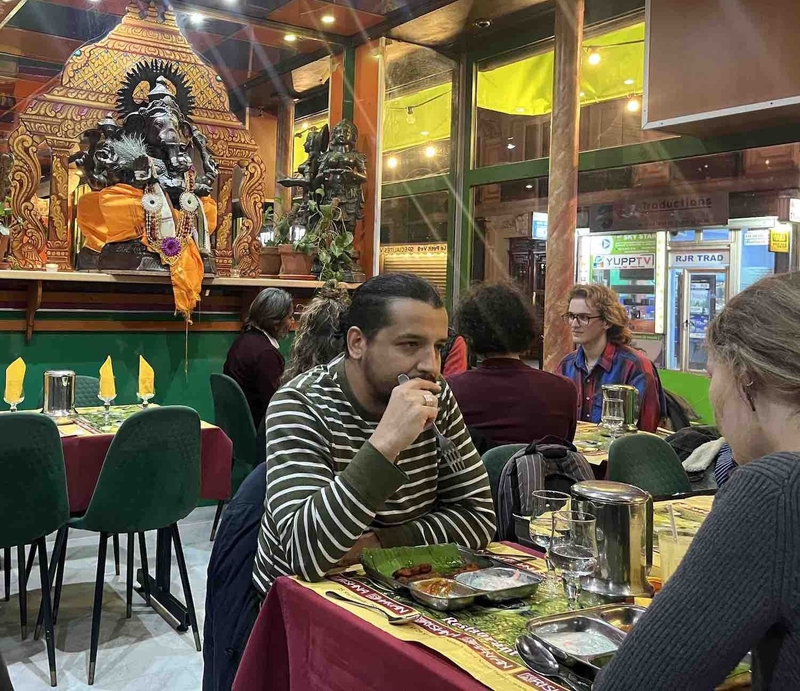

Not that you aren’t spoilt for places to eat In the 10th arrondissement (local government district) around the Gare du Nord. There are more than 800, most of them ethnic with lots of Turkish and Moroccan, Sri Lankan and Indian establishments. The area boasts a ‘Little India’ arcade in the Passage Brady off the Boulevard de Strasbourg but there’s not enough happening to recommend. Instead try the the dosas and thalis at Krishna Bhavan 100m Veg, on the Rue Cail (veggie and doesn’t serve alcohol).
For affordable traditional French food seek out the buzzing Brasserie Bellanger on the Rue du Faubourg Poissonnière (accompany escargots in garlic butter and magret de canard with a glorious Rhone red from the Les Vignerons d’Estezargues co-op). Equally unmissable are the award-winning croissants from the Carton patisserie on the same block as 25hours, but be prepared to queue… and then grab better coffee from the hotel’s vintage Citroen Acadiane coffee truck inside the lounge.
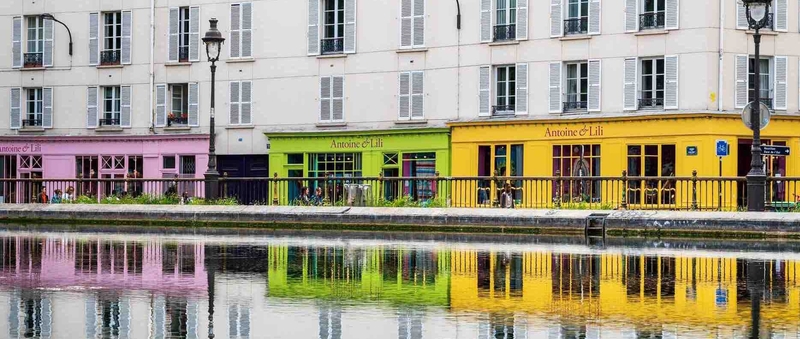
Tracking down Maigret along the Canal Saint-Martin
Bellanger gave me an appetite for a further quintessentially Parisian experience and where better than the aforementioned Canal Saint-Martin, just a 15 minute walk away from the 25hours? Even quicker if you hire a bike from the hotel (15 euros for a full day). This 4.5km artery was built under Napoleon to supply fresh water to Paris from the River Ourcq. Later in the 19th century it was thronged with barges ferrying industrial raw materials and its docks were rough hang-outs. These days a gentler canal is for pleasure cruises, dog walking or watching the world go by at numerous cafes. At its southern end, after the Bastille, it goes underground for a couple of kilometres; indeed it flows under Boulevard-Richard Lenoir, where Maigret’s fictional home was set – at no.132.
Simenon published 75 Maigret novels (63 set in Paris) between 1931 and 1972. In the 47th, Maigret and the Headless Corpse, the Canal is the actual focus. A man’s arm is fished out, then the remaining body parts are discovered but not the head. Maigret is called in. You can visit the exact spot in the story, a bend in the waterway, level with the stylish Rue des Récollets. From one of the iron footbridges which – along with the locks and leafiness – make this stretch so attractive I stared down into the turbid waters.
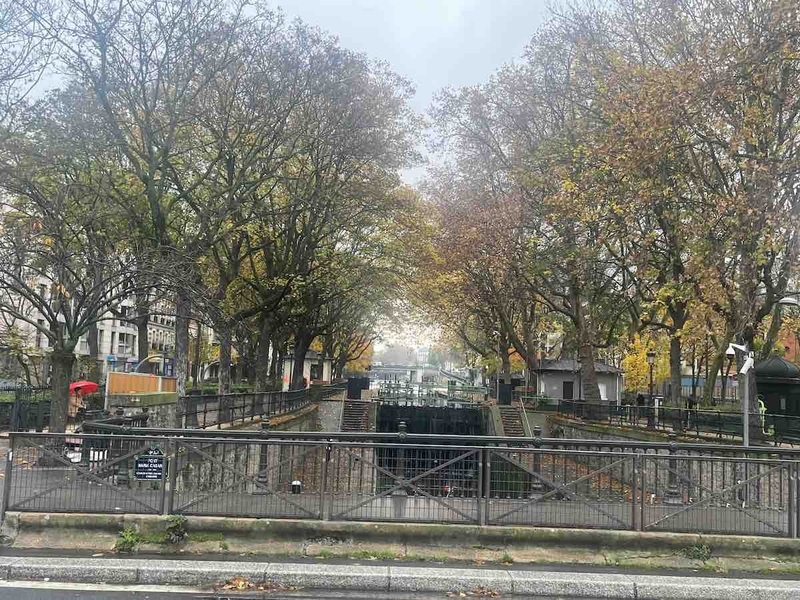
Everyone else seemed to have eyes only for bijou shopping opportunities, sign of well-established gentrification. Check out in particular Antoine et Lili, chic purveyors of home decor and women and children’s clothing, whose colourful storefronts light up this stretch of the often grey Quai de Valmy.
On the opposite side of the canal, along the Quai de Jemmapes, is another Saint-Martin landmark, the upmarket bistro called the Hôtel du Nord. A novel set there inspired the classic 1938 Marcel Carné movie of the same name (“A nearly fatal gunshot separates a dejected young couple. But, amid a sad but beautiful panorama of lively characters, love has the final say. Can life be a fairy tale?”). Spoiler – both interiors and a mock-up canal were recreated at the film studios.
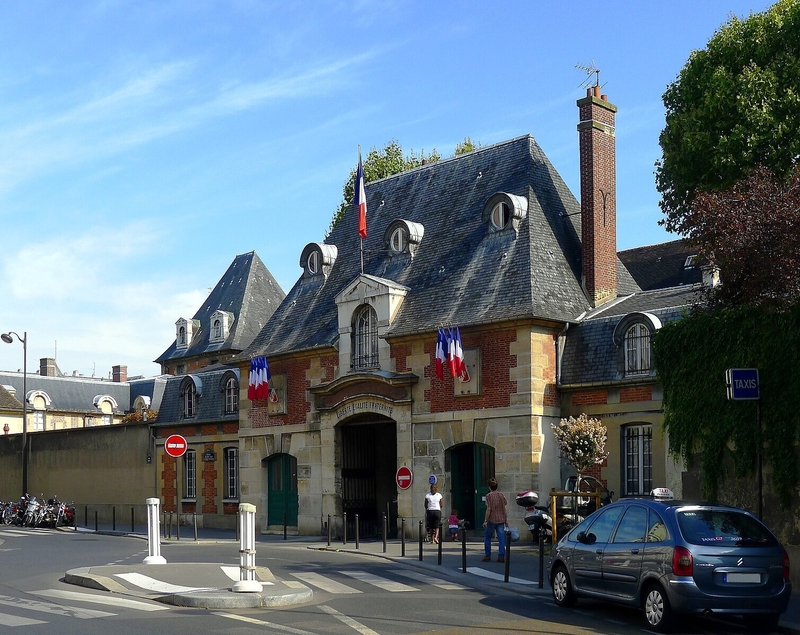
Just behind the Hôtel, off the waterfront, is an atmospheric remnant of a much older Paris – whose glorious gardens are open to the public at weekends. The Hôpital Saint-Louis was commissioned by Henry IV in 1607. Still a working hospital with modern add-ons, its original pavilions of brick and stone mirror the higher profile Place des Voges in the Marais district. Their original purpose was to isolate plague victims. It benefited from being outside the city walls, like the nearby Montfaucon gibbet, which hanged and displayed the bodies of hundreds of Parisians later in the same century. Today cobbled streets still give parts a village feel.
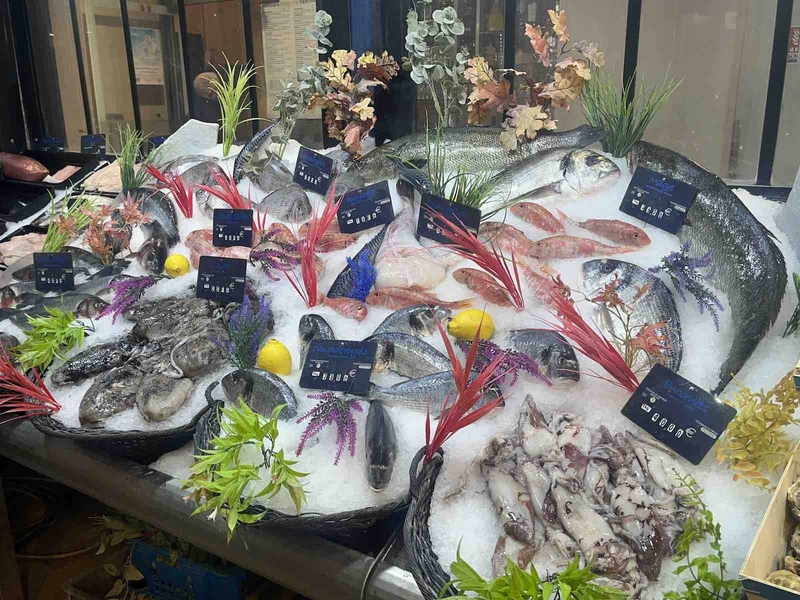
Changing Rue du Chateau d’eau – vive le gentrification
How did Maigret solve the Headless Corpse case, you ask? You’ll have to buy the book, preferably in one of those vintage green Penguin editions. Like the Inspector, I crave fresh adventures. My next Paris case was the Mystery of the City’s Smallest House.
I discovered it quite by accident on arguably the 10th arrondissement’s coolest thoroughfare. The Rue du Château d’eau runs for 700 metres from near the Place de la République to the Gare du Nord. Its idyllic name is a kind of camouflage; until being covered over in1841 it was an open sewer. This narrow Parisian survivor crosses some of those Grands Boulevards created by the sweeping renovator Baron Haussmann around the same time.


Château d’eau has long been one of the city’s African neighbourhoods, but it is now home to a new colony of creatives. The evidence is everywhere. Alongside Senegalese hair-braiding parlours, Turkish tailors and the Parisian old school Boucherie D. Chainay you’ll also find a natural wine bar, ecological homeware at La Trésorerie, organic farm to fork ‘cuisine engagée’ at Les Résistants and, naturally a gourmet chocolatier, Fifi La Praline.
Amid all this a Eureka moment. Ignoring a string of hip fashion shops I stumbled upon Chamacco at 39 Rue du Château d’eau, just a narrow doorway next to a sportswear discount store. Hanging outside a selection of heavy cotton ‘workmen’s shirts’, the kind some arty designer websites flog you for £130 a shot. My purchase? 35 euros. Googling the street later I discovered the 19th century premises rate as Paris’s Smallest House. Wedged between two buildings, it’s a tight squeeze at just 1.10 metres wide and 5 metres high. It had previously been a passage. Apparently after an inheritance dispute a single house was built, small enough to block the passage but – to avoid excessive fees – not over-large. My shirt fits snugly too.


A prime recommendation in these parts, though, is a visit to the Marché Couvert Saint-Martin around the corner. If you were self-catering it is the perfect place to source – from the prettiest fresh fish display I’ve ever seen to a comprehensive wine stall. Specials at the Boucherie Eveque included red-legged partridge and other seasonal ‘gibiers de chasse’, but I, by necessity, restricted myself to a garlicky slab of jambon persillé to nibble en route to the rival Marché Couvert Saint-Quentin 10 minutes north up the Boulevard Magenta. The stalls are less quirky, more representative of its own workaday multi-cultural neighbourhood.
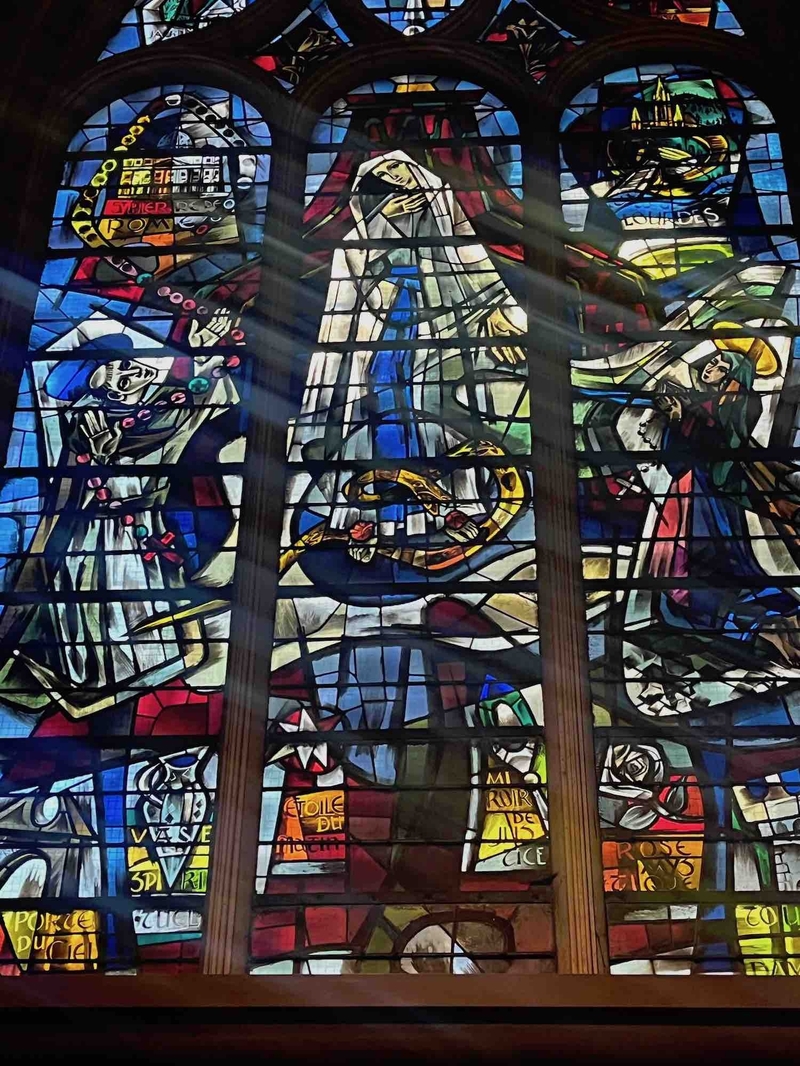
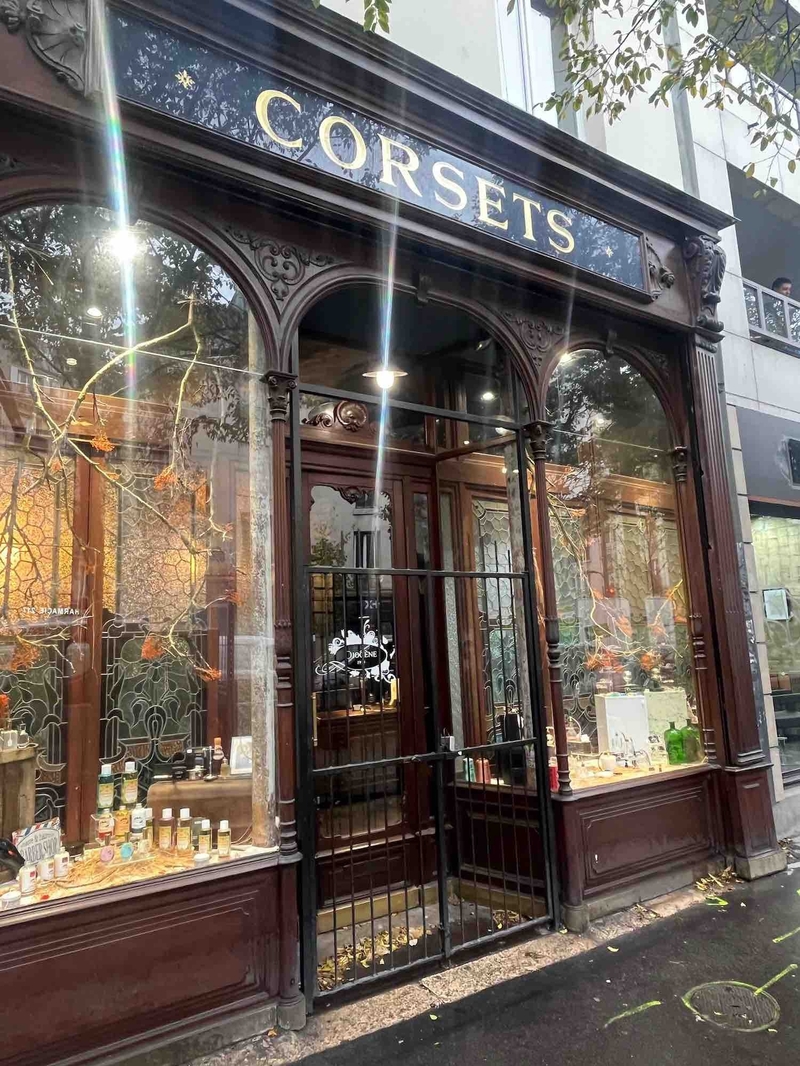
It is a striking 19th century assembly of cast iron and huge glass panels. Not a patch on, mind, the church of Saint Laurent further down Magenta. This favourite Parisian haven of mine is a fascinating mongrel of a place, on this site since the 10th century but rebuilt and enlarged several times. The choir is 15th century, the nave 17th century. It even survived closure and conversion to a Temple of Reason during the French Revolution.
Finally a new ‘Flamboyant Gothic’ facade replaced a classical frontage in the 19th century to fit into the intersection of three new Haussmann boulevards. What makes it an essential must-see is the array of stained glass on offer with beautiful pieces from the mid-20th century, some of them by British craftsman. A place for quiet contemplation amid the Parisian bustle. Try it.
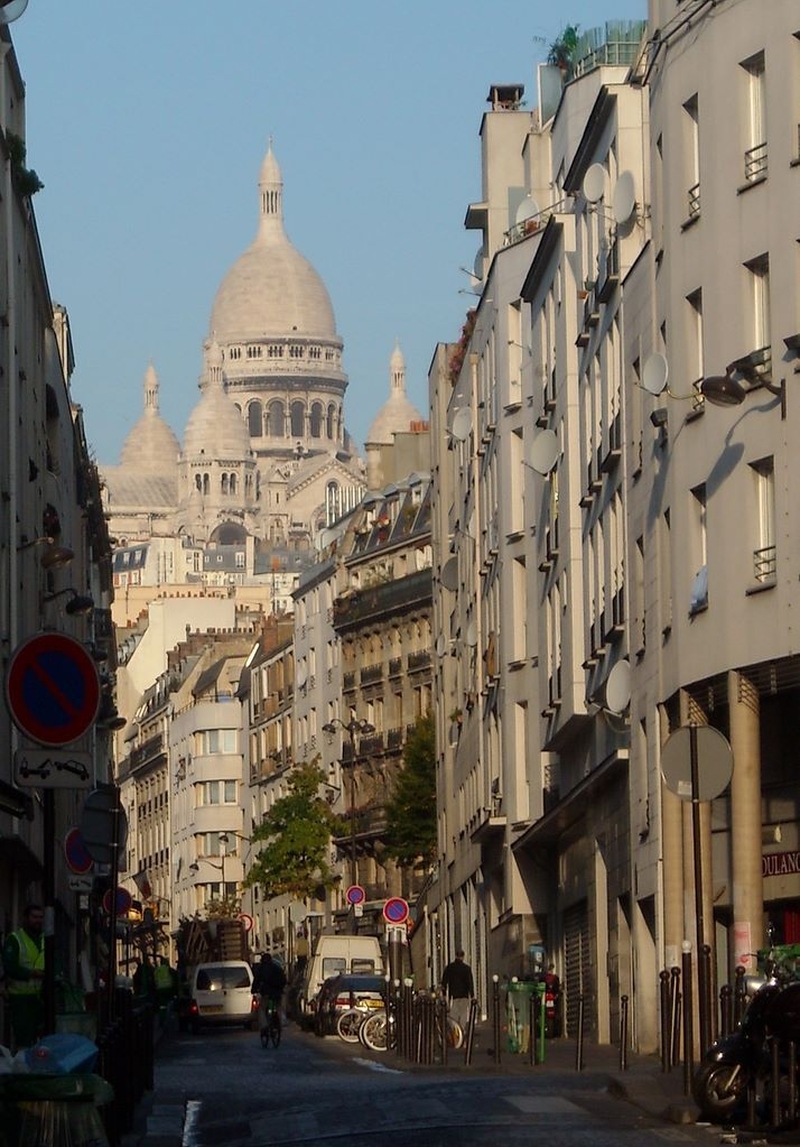
Goutte d’Or and an edgier approach up to touristy Montmartre
Not to be confused with its Château namesake, Château Rouge/Goutte d’Or is another inner-city Afrocentric district, to the north of the Gare du Nord, historically edgier. You cross the tracks at the Barbès–Rochechouart elevated Metro station and you’re in the 18th arrondissement and this neighbourhood of over 300 businesses devoted to fashion, fabrics and food from North and West Africa. Yet stroll up the Rue de Chartres and the familiar white wedding cake that is the Basilica Sacré Coeur looms up ahead of you. En route for a sunset view of Paris from its steps (to get there we chickened out and took the funicular) we stopped off at three interesting spots devoted to the holy trinity of film, beer and music.
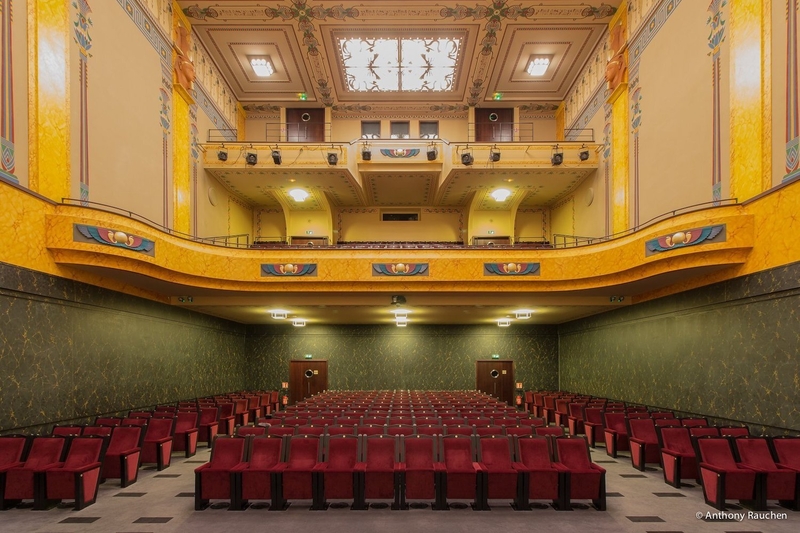
On the doorstep of the 18th the Louxor Cinema is a rare vestige of the days of silent cinema, its gorgeous Egyptian Palace style Art Deco detail restored by enthusiasts, who have also equipped it with state of the art projection equipment. Originally built in 1921, it shut in 1983 and after brief stints as a West Indian nightclub and a gay disco the building was left to slide into dereliction. Restored with a 342-seat capacity, it’s a joy to visit. Best of all see a movie there, but its rooftop bar is an attractive alternative.


Five minutes’ walk away, The Brasserie de la Goutte d’Or only opened its doors in 2016, but significantly it was the first new wave craft brewery in Paris. Many more have followed, yet it remains arguably number one, producing alongside its core draught selection a range of mixed fermentation sharing bottles. All can be sampled at the on-site taproom at 28 Rue de la Goutte d’Or.
The amazing Balades Sonores record shop has recently moved into larger premises around the corner but still manages to feel like an Aladdin Sane’s (sic) Cave of sonic delights with a collection of new and ‘previously loved’ recordings in every format with vinyl to the fore. Hard to tear yourself away even for the moon over Montmartre.
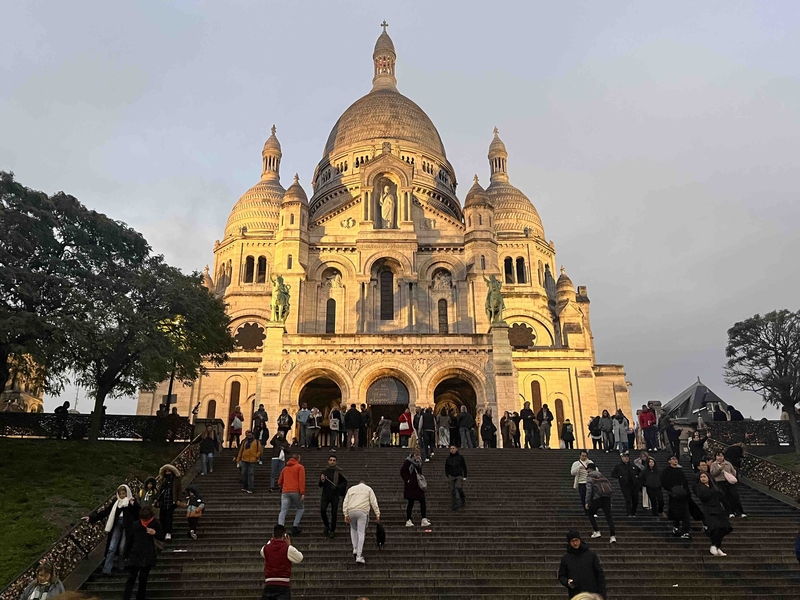
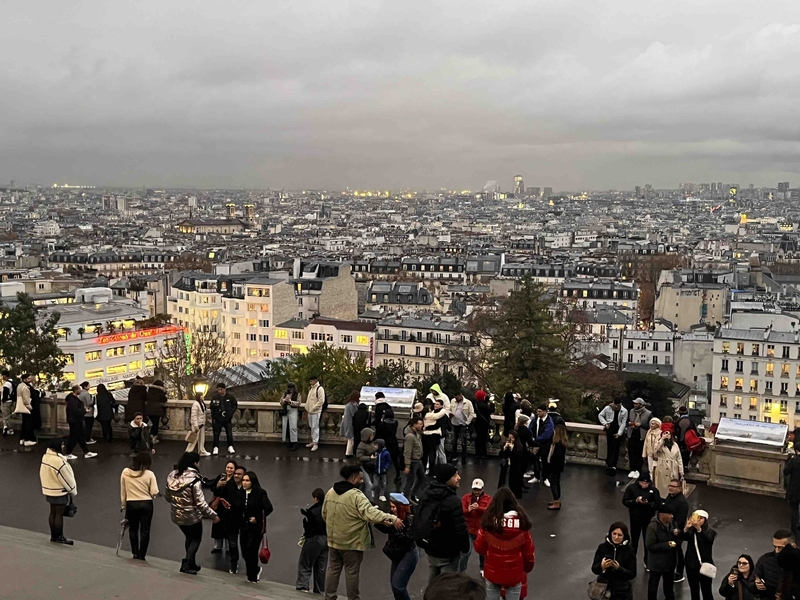
Never enough time in Paris. Next time I stay at the 25hours I’ve pledged a musical pilgrimage to another gritty district, Belleville, out to the east. To follow the chanteuse known as ‘The Little Sparrow’ to No.72 Rue de Belleville. Legend has it that Edith Piaf was born on the pavement outside that address. A plaque reads: “On the steps of this house was born on the 19 December 1915, in the greatest poverty, Edith Piaf, whose voice would later move the world.” There’s also a bar full of memorabilia, a restaurant where you can sing along to her greatest hits, an unflattering statue and a museum. She’s buried in the Père-Lachaise Cemetery, just 15 minutes’ walk away. There’s so much more to Paris than The Louvre, the Eiffel Tower and the Champs-Élysées.
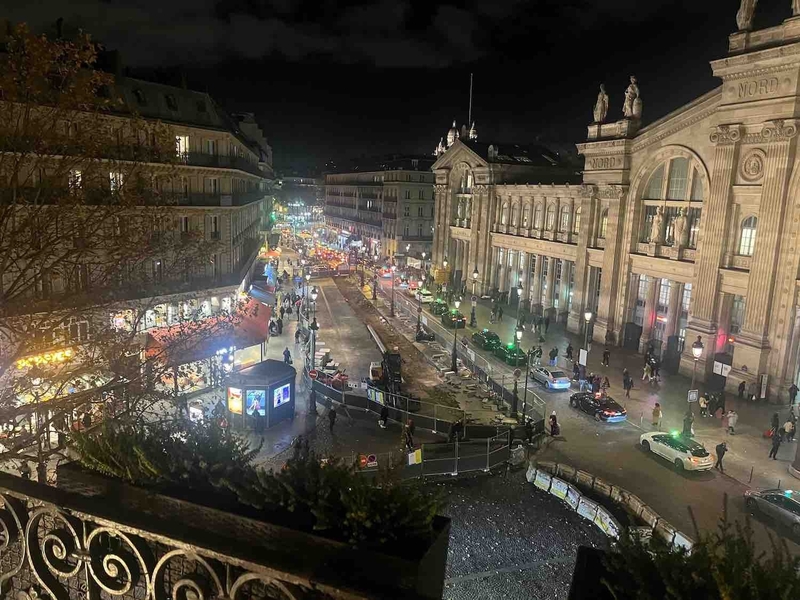
Fact file
25hours Hotel Terminus Nord, 12 Boulevard de Denain, 75010 Paris Rooms– small from 180 euros per night, medium from 209 euros and large from 239 euros, extra large 269 euros. Breakfast buffet costs an additional 26 euros.
Neil travelled from London St Pancras to the Gare du Nord on Eurostar. Tickets start at £39 one way.
To buy tickets and packages for the Paris Olympic Games (Fri Jul 26-Sun Aug 11, 2024) visit the official site.





